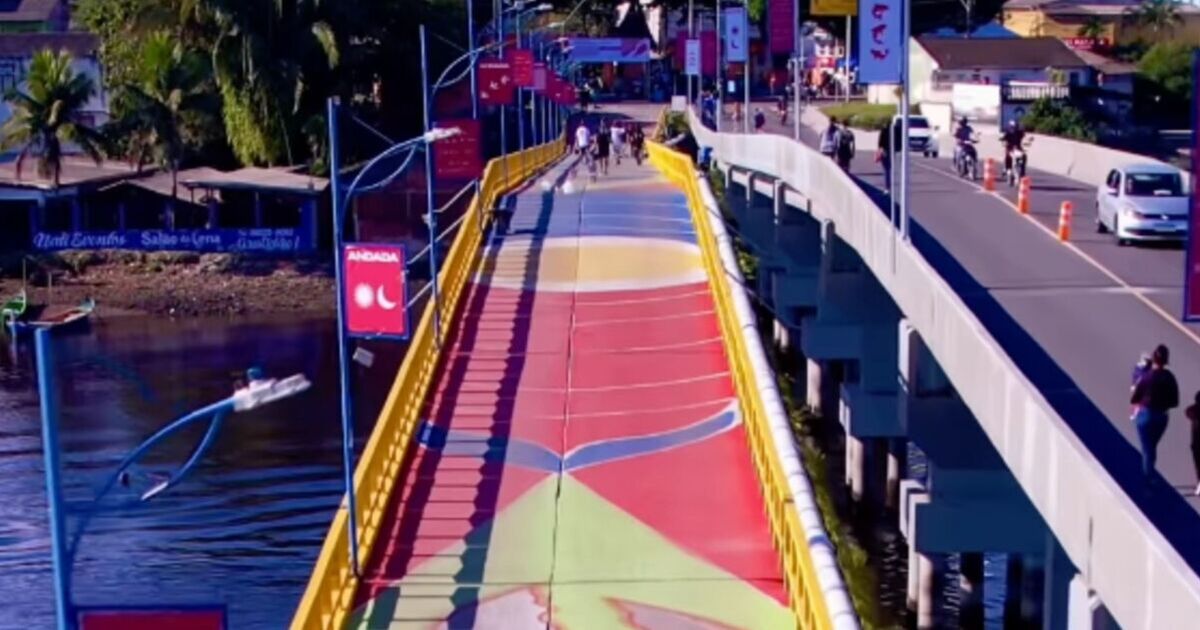A footbridge bridge in Brazil has been transformed into one of the “most colourful” in the world, thanks to a local community project. The redecorated structure has become a tourist attraction, bringing in visitors from around the country and from abroad.
The bridge in question is located in the city of Paranaguá on Brazil’s Paraná coastline and called the Ponte dos Valadares. The 294-metre crossing is used mostly by pedestrians and cyclists travelling between Valadares Island and the city’s historic centre.
The original appearance of the bridge, though, left a lot to be desired, prompting an artistic collective to come up with an unusual idea.
The Paranaguá Mais Cores group launched what they called “Project Andada” in an attempt to brighten up the bridge’s grey appearance.
It brought together 300 people – including volunteer artists and local residents – who painted the bridge in vibrant colours.
The organisers said they wanted to change the footbridge and offer the population a new point of social interaction and self-esteem.
Gio Negromonte – a lawyer, artist and project coordinator – noted that as far as research shows, there is no record of an urban intervention larger than this – making it possible to claim it as the most colourful bridge in the world.
The initiative was partly funded by the State Programme for Cultural Promotion and Incentive (Profice).
Secretary of State for Culture, Luciana Casagrande Pereira said: “Projects like this demonstrate how art transforms urban spaces and promotes community involvement.
“It is precisely to make these initiatives possible that Profice was created: to foster creativity, support artists from Paraná and strengthen the presence of culture in all regions of the state.”
The artistic composition combines colours, elements related to local nature and symbols typical of Paraná and Caiçara – such as crabs and mangroves.
The completed project has also helped to bring in more visitors to the city in boost to tourism.
“By using elements such as the crab, which gives its name to the football stadium, has its own sculpture in the centre and is often used in the cuisine, we were able to convey our identity to visitors,” said Gio Negromonte.
He continued:”This helped increase the number of tourists, on the bridge and on Valadares Island itself, where the fandango and our caiçara culture are located.
“The self-esteem of the people of Parnanguara increased with this renewed attraction.”

